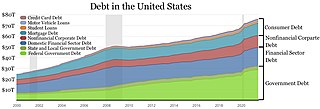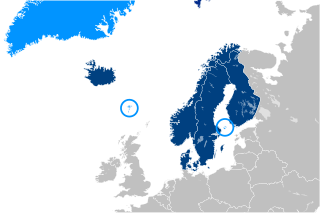Related Research Articles
Tuition payments, usually known as tuition in American English and as tuition fees in Commonwealth English, are fees charged by education institutions for instruction or other services. Besides public spending, private spending via tuition payments are the largest revenue sources for education institutions in some countries. In most developed countries, especially countries in Scandinavia and Continental Europe, there are no or only nominal tuition fees for all forms of education, including university and other higher education.

Tertiary education fees in Australia are payable for courses at tertiary education institutions. The Commonwealth government provides loans and subsidies to relieve the cost of tertiary education for some students. Some students are supported by the government and are required to pay only part of the cost of tuition, called the "student contribution", and the government pays the balance. Some government supported students can defer payment of their contribution as a HECS-HELP loan. Other domestic students are full fee-paying and do not receive direct government contribution to the cost of their education. Some domestic students in full fee courses can obtain a FEE-HELP loan from the Australian government up to a lifetime limit of $150,000 for medicine, dentistry and veterinary science programs and $104,440 for all other programs.

A student loan is a type of loan designed to help students pay for post-secondary education and the associated fees, such as tuition, books and supplies, and living expenses. It may differ from other types of loans in the fact that the interest rate may be substantially lower and the repayment schedule may be deferred while the student is still in school. It also differs in many countries in the strict laws regulating renegotiating and bankruptcy. This article highlights the differences of the student loan system in several major countries.
A 529 plan is a tax-advantaged investment vehicle in the United States designed to encourage saving for the future higher education expenses of a designated beneficiary. In 2017, K–12 public, private, and religious school tuition were included as qualified expenses for 529 plans along with post-secondary education costs after passage of the Tax Cuts and Jobs Act.

Free education is education funded through government spending or charitable organizations rather than tuition funding. Many models of free higher education have been proposed. Primary school and other comprehensive or compulsory education is free in many countries. Tertiary education is also free in certain countries, including post-graduate studies in the Nordic countries. The Article 13 of International Covenant on Economic, Social and Cultural Rights ensures the right to free education at primary education and progressive introduction of it at secondary and higher education as the right to education.
Student financial aid in the United States is funding that is available exclusively to students attending a post-secondary educational institution in the United States. This funding is used to assist in covering the many costs incurred in the pursuit of post-secondary education. Financial aid is available from federal and state governments, educational institutions, and private organizations. It can be awarded in the form of grants, loans, work-study, and scholarships. In order to apply for federal financial aid, students must first complete the Free Application for Federal Student Aid (FAFSA).

The Ontario Student Assistance Program (OSAP) (French: Régime d'aide financière aux étudiantes et étudiants de l'Ontario ) is a provincial financial aid program that offers grants and loans to help Ontario students pay for their post-secondary education. OSAP determines the amount of money that a student is eligible to receive by considering factors such as tuition, course load, and the financial resources of the student. More than 380,000 students – more than half of all full-time students –received student financial aid in 2014-15.

A school meal or school lunch is a meal provided to students and sometimes teachers at a school, typically in the middle or beginning of the school day. Countries around the world offer various kinds of school meal programs. Each week day, millions of children from all standards and grades receive meals at their respective schools. School meals in twelve or more countries provide high-energy food with high nutritional values either free or at economical rates.
A Pell Grant is a subsidy the U.S. federal government provides for students who need it to pay for college. Federal Pell Grants are limited to students with financial need, who have not earned their first bachelor's degree, or who are enrolled in certain post-baccalaureate programs, through participating institutions. Originally known as a Basic Educational Opportunity Grant, it was renamed in 1980 in honor of Democratic U.S. Senator Claiborne Pell of Rhode Island. A Pell Grant is generally considered the foundation of a student's financial aid package, to which other forms of aid are added. The Federal Pell Grant program is administered by the United States Department of Education, which determines the student's financial need and through it, the student's Pell eligibility. The U.S. Department of Education uses a standard formula to evaluate financial information reported on the Free Application for Federal Student Aid (FAFSA) for determining the student's Expected Family Contribution (EFC).
The Government of Germany provides financial aid to students in the form of loans and grants regardless of their social and economic situation. This aid is provided under the Bundesausbildungsförderungsgesetz or "BAföG" [ˈbaːfœk].
Student loans and grants in the United Kingdom are primarily provided by the government through the Student Loans Company (SLC), an executive non-departmental public body. The SLC is responsible for Student Finance England and Student Finance Wales, and is a delivery partner of Student Finance NI and the Student Awards Agency for Scotland. Most undergraduate university students resident in the United Kingdom are eligible for student loans, and some students on teacher training courses may also apply for loans. Student loans also became available from the 2016/17 academic year to postgraduate students who study a taught Masters, research or Doctoral course.

Student loans in the United States are a form of financial aid intended to help students access higher education. In 2018, 70 percent of higher education graduates had used loans to cover some or all of their expenses. With notable exceptions, student loans must be repaid, in contrast to other forms of financial aid such as scholarships, which are not repaid, and grants, which rarely have to be repaid. Student loans may be discharged through bankruptcy, but this is difficult.
Student debt is a form of debt that is owed by an attending, formerly withdrawn, or graduated student to a lending institution, or to a financial institution.
The Lifetime Learning Credit, provided by 26 U.S.C. § 25A(b), is available to taxpayers in the United States who have incurred education expenses. For this credit to be claimed by a taxpayer, the student must attend school on at least a part-time basis. The credit can be claimed for education expenses incurred by the taxpayer, the taxpayer's spouse, or the taxpayer's dependent.

Social security or welfare in Finland is very comprehensive compared to what almost all other countries provide. In the late 1980s, Finland had one of the world's most advanced welfare systems, which guaranteed decent living conditions to all Finns. Since then social security has been cut back, but the system is still one of the most comprehensive in the world. Created almost entirely during the first three decades after World War II, the social security system was an outgrowth of the traditional Nordic belief that the state is not inherently hostile to the well-being of its citizens and can intervene benevolently on their behalf. According to some social historians, the basis of this belief was a relatively benign history that had allowed the gradual emergence of a free and independent peasantry in the Nordic countries and had curtailed the dominance of the nobility and the subsequent formation of a powerful right wing. Finland's history was harsher than the histories of the other Nordic countries but didn't prevent the country from following their path of social development.
Student loans in South Korea, are student loans provided to South Korea's students that are managed by the Korea Student Aid Foundation (KOSAF) which was established in May 2009. According to the governmental philosophy that Korea's future depends on talent development and no student should quit studying due to financial reasons, they help students grow into talents that serve the nation and society as members of Korea. Through the management of Korea's national scholarship programs, student loan programs, and talent development programs, KOSAF offers customized student aid services and student loan program is one of their major tasks.

The Universal Access to Quality Tertiary Education Act, officially designated as Republic Act 10931, is a Philippine law that institutionalizes free tuition and exemption from other fees in state universities and colleges (SUCs), and local universities and colleges (LUCs) in the Philippines. The law also foresees subsidies for private higher education institutions. It is intended to give underprivileged Filipino students a better chance to earn a college degree.

The National Student Financial Aid Scheme (NSFAS) is a South African government student financial aid scheme which provides financial aid to undergraduate students to help pay for the cost of their tertiary education after finishing high school. It is funded by the Department of Higher Education and Training. The program also manages bursaries such as the Funza Lushaka Teacher Bursary, DHET Disability Bursary and other bursaries from the Sector Education and Training Authorities (SETAs).

The Government of Canada introduced multiple temporary social security and financial aid programs in response to the economic impacts of the COVID-19 pandemic in Canada. The initial CA$82-billion aid package was announced on March 18, 2020 by Justin Trudeau.
References
- ↑ Financial aid for foreign students, Kela website
- ↑ "Financial aid for students". kela.en.
- ↑ "Housing benefits". kela.en.
- ↑ "Study grant". kela.en.
- ↑ "Income". kela.en.
- ↑ "Changes as of 1 August 2014 - kela.fi". Archived from the original on 2014-08-19. Retrieved 2014-08-18.
- ↑ Korhonen, Juuso (September 23, 2019). "Pohjoismaisten opiskelijoiden opintolainojen määrät".